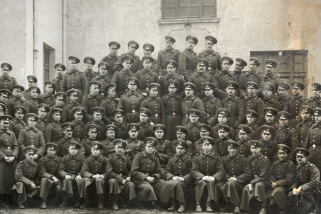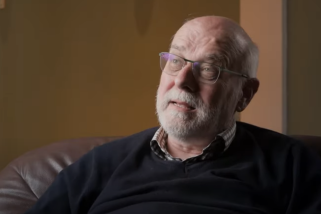deadline 31 January 2018 t
Organisation: Boris Barth, Ota Konrád (Charles University, Prague), Oswald
Ueberegger (Free University of Bozen-Bolzano), Rudolf Kučera (Masaryk
Institute and Archives of the CAS, Prague)
Place: Prague, Villa Lanna
04-06/10/2018
After the end of the Great War 1918 and the Paris peace conferences that
followed, a new but unstable international political system was established in
Europe. Especially in Central and Eastern Europe, historians have often
analyzed this system in the context of the new nationstates that emerged. The
transition from an imperial order to one based on nations has been at the
center of attention as well. For the past few years, however, a new tendency
can be found in historical research, which more strongly than before
highlights
the local and/or regional
dimensions of these processes. This trend may be a counter-reaction to the
rise
of global studies and global history. This trend in European comparative
history studies will be addressed at an upcoming conference now being prepared
in Prague.
After the War, in many regions and among rather different social groups, the
state lost its legitimacy as an institution. In other countries, governmental
authority had ceased to exist altogether. All governments were confronted with
the problem of reestablishing their authority or, if they had acquired new
territories, of creating new loyalties. For the victorious powers, this
process
was obviously easier than for those that were defeated. Recent research has
clearly shown that after 1918–19, regional and local identities, which were
not always tied to a certain nation-state, continued to exist or were
revitalized. It is still an open question how the new order was accepted in
the
European regions, taking into account national, governmental, political,
social, religious, and economic factors. Local actors displayed a high degree
of self-organization, especially in territories where the authority of the
state was weak or had collapsed at the end of the War. Units of paramilitary
volunteers were formed, which tried to guarantee “law and order’”
(whatever that may mean), but also distribution of food and the general
organization of daily life. A local and regional perspective will allow a new
view of the processes through which the new nation-states were created “from
below”. An additional question might deal with the problem of whether
conflicts were really rooted in national divergences, or whether the term
“national” only served to cover up other, deeper problems and conflicts.
Some historians have argued that after 1918, a new era of “total” nation
states (cf. Lutz Raffael) began. However, the establishment of exclusive
national identities sometimes faced resistance among the majority of people
who
spoke the same language and shared the same religion. Against this background,
it makes sense to study not only the larger “national” frame, but to
analyze single regions, territories and towns as well in order to find out how
the radical changes of 1918–19 were accepted and internalized. Such studies
need not be limited to the successor states of the great empires. It also can
be useful to add perspective on other powers, whether victorious, defeated, or
neutral, in order to draw useful comparisons.
Recent research has clearly shown that local identities survived the Great
War.
After 1918–19 these identities collided directly with official attempts to
create homogenous nation states. In Upper Silesia in 1921, a great number of
“ethnic” Poles voted for union with Germany—but hardly anything is known
about their motives. In the Southern parts of East Prussia, the socalled
“Staropruski,” a Polish-speaking Protestant minority, also voted for
Germany because they did not want to live in a Catholic country. In the
Polish-speaking parts of Poland, different mentalities and identities could be
found as well. In the national census of 1931, in
some regions of Eastern Poland, a large part of the population refused to
choose any national or ethnic category at all and identified with the term
“hiesige” (“from here”). Many other examples of similar attitudes,
especially in Central and Eastern Europe, the Iberian peninsula and Italy are
well known.
This new context also allows for new interpretations of the challenges and the
effects of the Bolshevik revolution. Historians have hardly discussed this
topic since 1989–90. Interest in early communism has been widely replaced by
themes which are more oriented toward the nation-state. However, immediately
after the War, many local and regional actors developed and followed up on a
positive attitude toward the socialist vision, aiming at a radical change in
their society. Others were horrified by the rise of communism. It is both an
open and a challenging question whether and how much political, social, and
economic decisions—at the local and regional level—were influenced or
determined by those attitudes. That question will be discussed in each case.
We are especially interested in papers that touch upon some of the following
topics:
– 1918 in daily life and daily experience, with a focus on the local and
regional contexts. Attention could be paid to the experience of the end of the
war and the specific interpretations of victory and defeat associated with
various visions of the coming political and social order. What characterized
the local and regional dimensions of the revolutionary and/or
counter-revolutionary movements?
– Continuity and change in the loyalties, identities and treatment of old and
new
minorities.
– Research on regional violence: what motives and factors were responsible for
the
emergence of violence and in what situations was it possible to limit or
prevent the
outbreak of violent conflict? Who were the main actors in those contexts?
– Research on the specific situations of border regions and border societies,
with
attention to the problems of minorities, refugees and expellees.
– Questions of legitimacy and local interpretations of radical change in the
early interwar years. Historical arguments and historical discourses were
often
used to create common political identities. Did tensions exist between local
or
regional
interpretations and the official national narratives?
Prof. Joern Leonhard (University of Freiburg) will give the key-note speech.
At the moment we are able to cover accommodation and parts of the travel
costs,
we are still looking for funds for travel costs.
Please send your abstracts of about 500 to 700 words by 31 January 2018 to:
boris.barth@uni-konstanz.de













